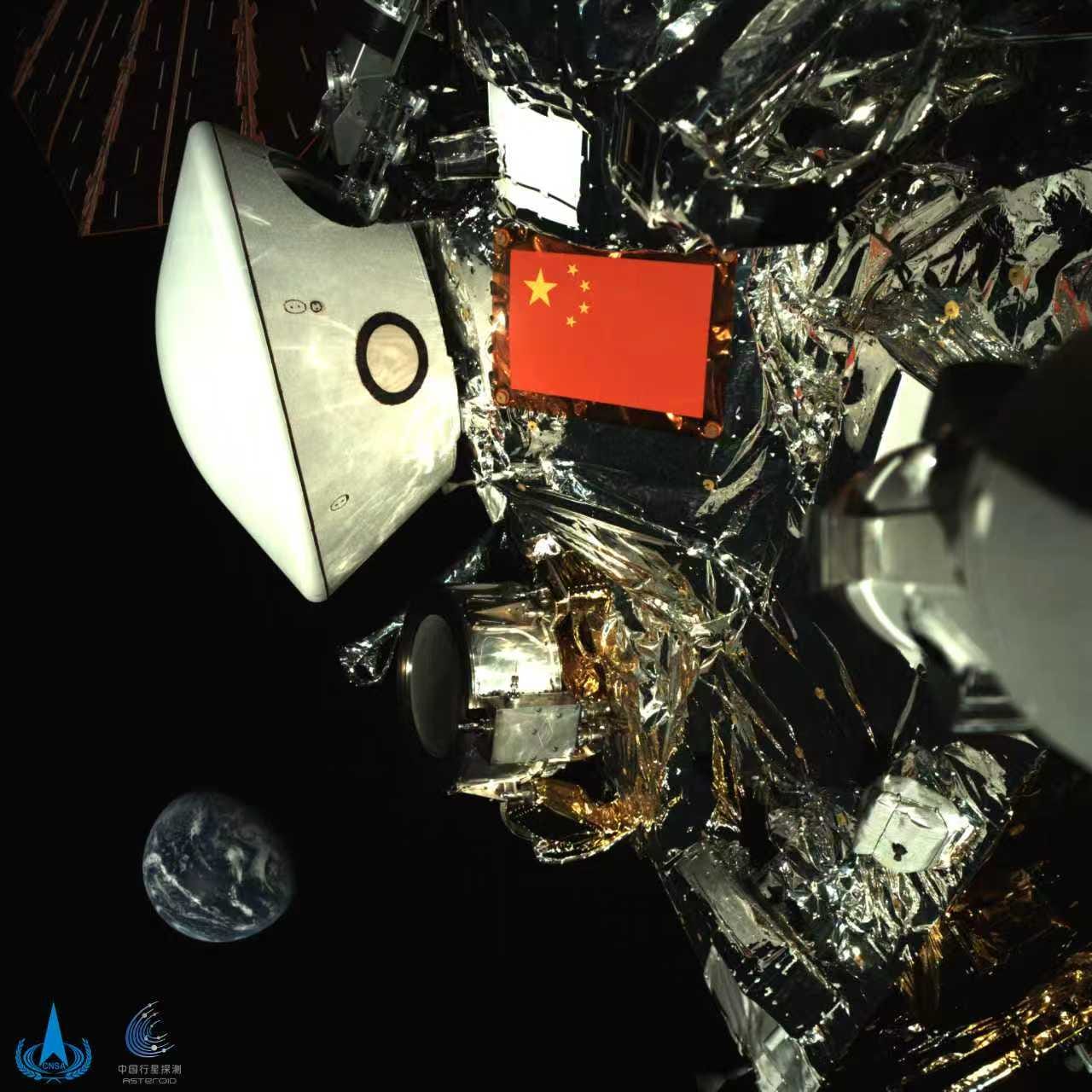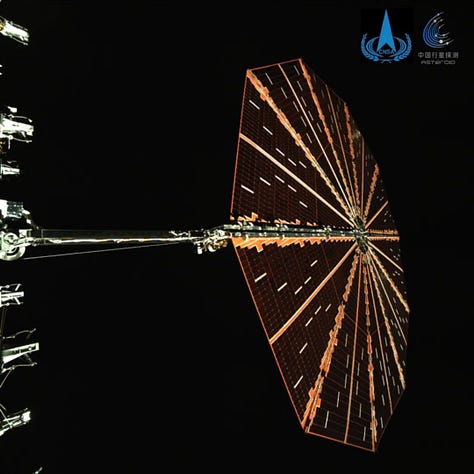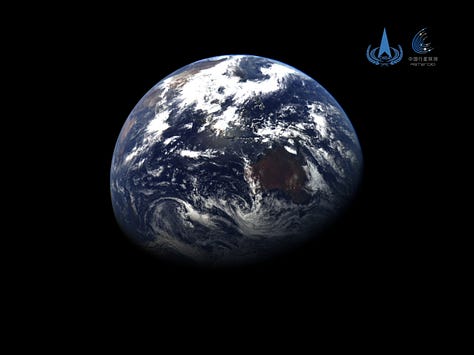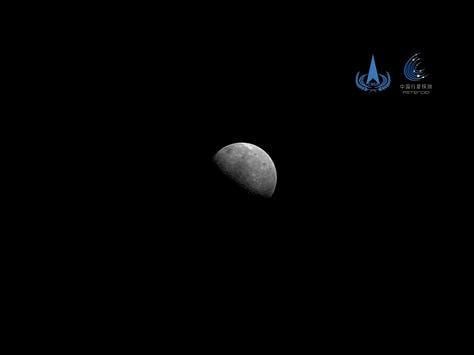Tianwen-2 Nears Halfway Point in Trek to Target Asteroid Kamoʻoalewa
A new image reveals the spacecraft's sample return capsule as well.

China’s Tianwen-2 has reached the midpoint of its outbound journey, with a new image shared for the milestone.
The China National Space Administration shared on October 1st that the Tianwen-2 asteroid sample return mission is about 43 million kilometers away from Earth and approximately 45 million kilometers from its target, 2016HO3/469219 Kamoʻoalewa, while operating in a healthy state after 125 days in space, remaining on track for arrival in the summer of 2026. It was added that various instruments have been powered on and are running normally, beaming scientific data back to Earth, alongside automated tests of sample collection mechanisms.
After arrival at 2016HO3/469219 Kamoʻoalewa, Tianwen-2 will fly alongside the asteroid and search for a suitable sampling site before collecting between 200 and 1,000 grams of samples via touch-and-go as well as anchor-and-attach methods. The anchor-and-attach method will utilize four small robotic arms to secure the spacecraft, while a touch-and-go approach will be more akin to NASA’s OSIRIS-REx mission.
Once samples are collected and secured in the spacecraft’s sample return capsule, Tianwen-2 will head back toward Earth and drop off the samples around 2029 during a flyby.
To gather a bounty of science during the mission, other than collecting samples, Tianwen-2 is equipped with a visible and infrared imaging spectrometer, thermal emission spectrometer, multispectral and medium field-of-view cameras, subsurface radar, magnetometer, charged and neutral particle analyzer, ejecta analyzer, narrow field-of-view navigation sensor, and an integrated laser navigation sensor. Together, these instruments support high-resolution imaging, surface and subsurface composition analysis, thermal and magnetic measurements, asteroid environment monitoring, and in-situ investigation.
While sharing news of the spacecraft’s status, the China National Space Administration also released a new image from an onboard camera. That image was taken while Tianwen-2 was still near Earth a few months ago, but it provides a first look at the atmospheric reentry shell (or return capsule) where samples will be stored for their delivery back to Earth. The camera that took the photo is said to be mounted on a maneuverable robotic arm and able to capture video as well.
During its trip away from Earth so far, Tianwen-2 has captured images of itself in June, followed by the Earth and the Moon (shared in July) as seen from about 590,000 kilometers away.



Released images from the mission align with some theories shared shortly before the mission began, as no photos of the spacecraft on Earth were shared. One is that the mission publicity plan will be to spread out released materials over Tianwen-2’s ten-year timeline to help sustain public engagement throughout the spacecraft’s journey.
Tianwen-2 is also expected to be exploring well into the 2030s, as its extended mission is to asteroid 311P/PanSTARRS out in the asteroid belt between Mars and Jupiter. The spacecraft is planned to thoroughly study 311P whilst doubling as a test of China’s deep space communications infrastructure ahead of the Tianwen-4 mission to Jupiter.


